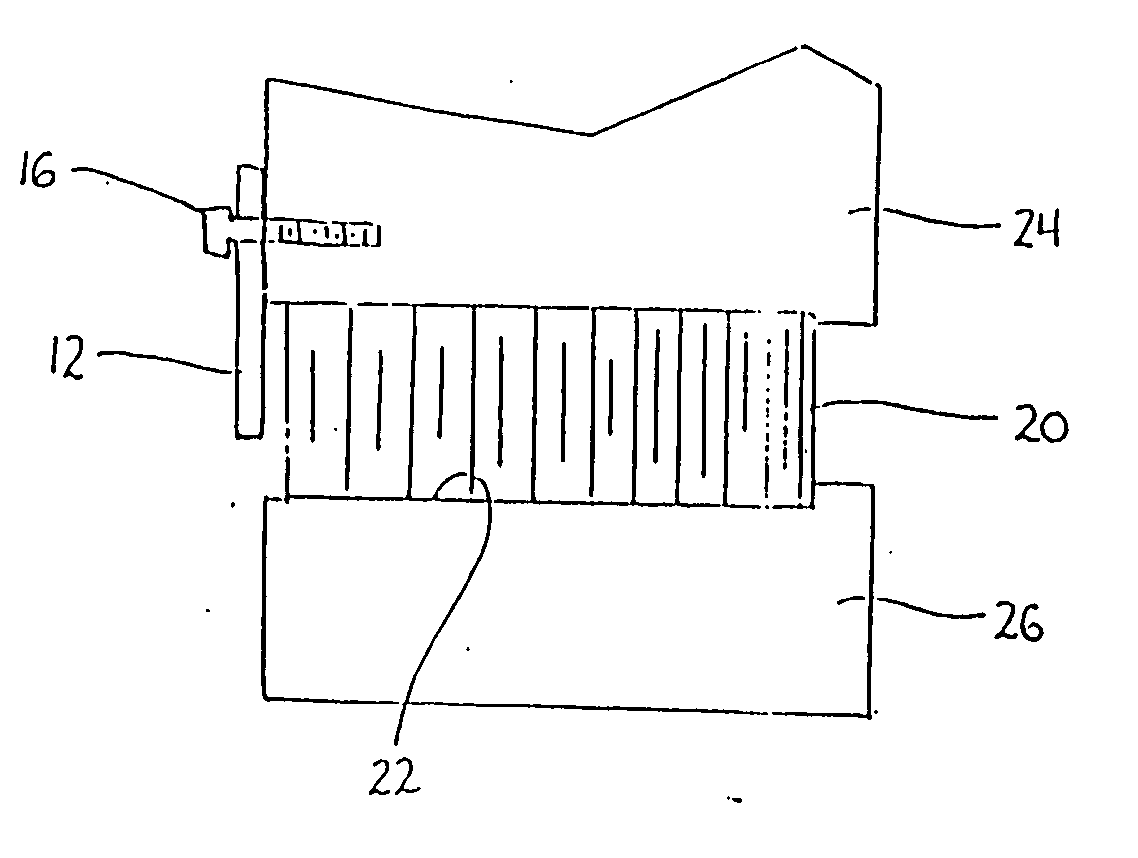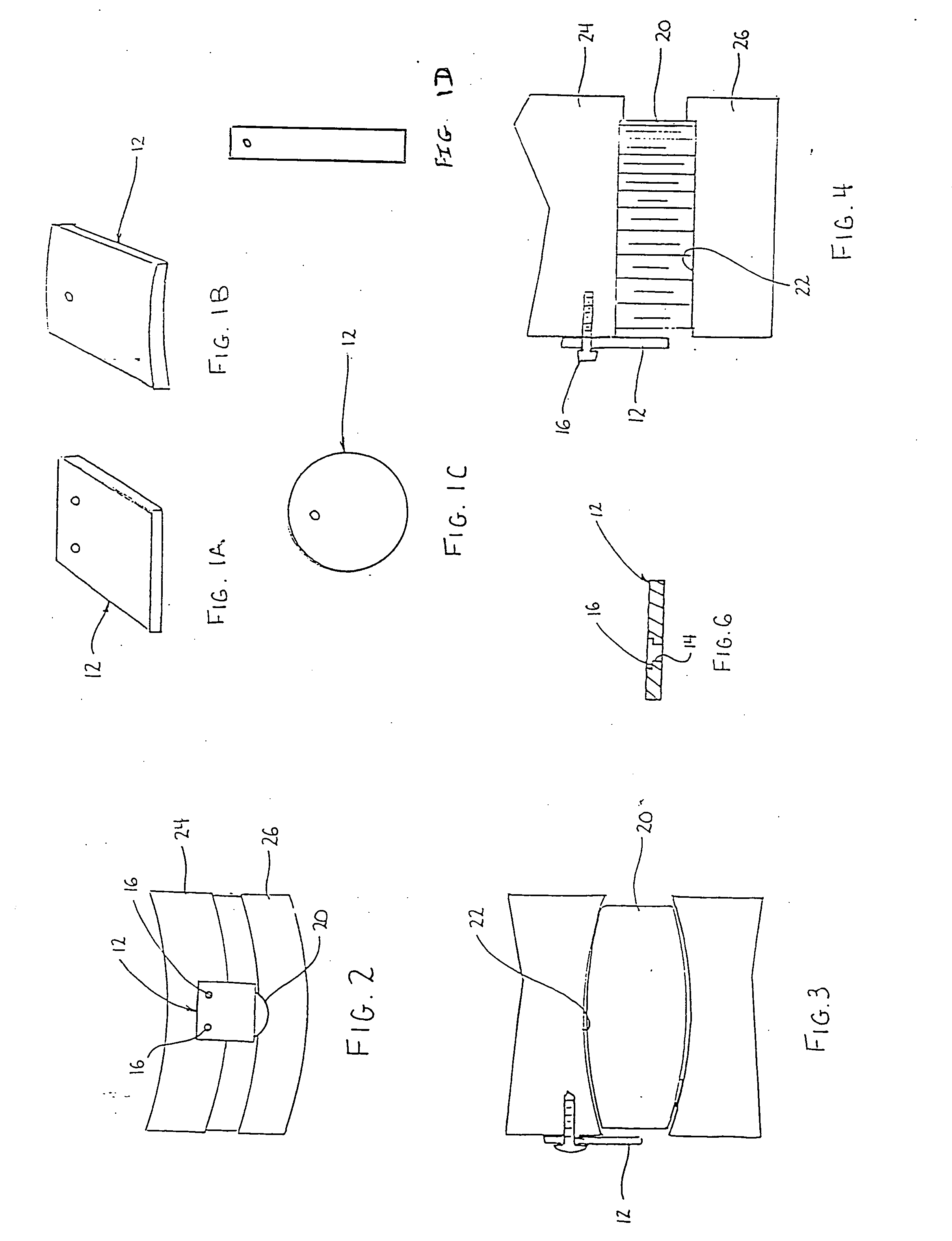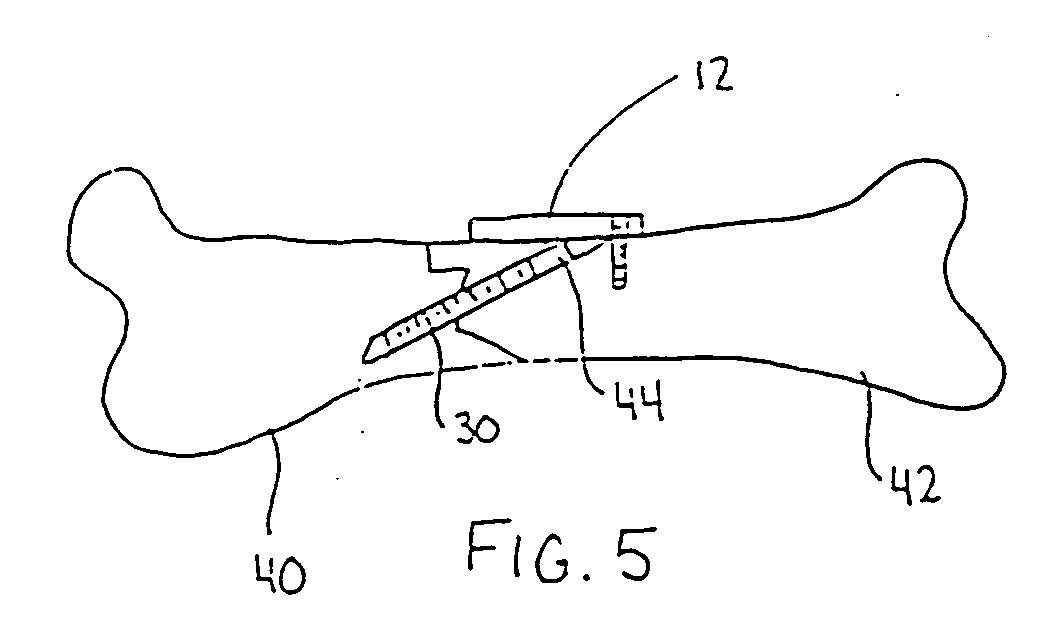Implant retaining device
a technology of retaining device and retaining plate, which is applied in the direction of ligaments, prostheses, osteosynthesis devices, etc., can solve the problems of progressive mechanical loosening, chronic and/or debilitating back pain, and nerves passing near the affected area may be compressed and consequently irritated
- Summary
- Abstract
- Description
- Claims
- Application Information
AI Technical Summary
Benefits of technology
Problems solved by technology
Method used
Image
Examples
Embodiment Construction
[0028] Preferred embodiments of the presently disclosed implant retaining device will now be described in detail with reference to the drawings in which like reference numerals designate identical or corresponding elements in each of the several views.
[0029] The implant retaining device of the present invention is intended to be attached to at least one vertebral body, to cover at least a portion of the disk space to prevent a vertebral implant from backing out of a receiving bed. The implant retaining device is especially suited for procedures where it would be desirable to prevent an implant from backing out of the spine. However, it is entirely suitable to applications involving the repair of other bony sites in the body.
[0030] In humans, the device may be used predominately in the lumbar and thoracic regions of the spine, but, is adaptable for use in the cervical spine and other regions of the body as well.
[0031] The implant retaining device described herein may be formed of ...
PUM
 Login to View More
Login to View More Abstract
Description
Claims
Application Information
 Login to View More
Login to View More - R&D
- Intellectual Property
- Life Sciences
- Materials
- Tech Scout
- Unparalleled Data Quality
- Higher Quality Content
- 60% Fewer Hallucinations
Browse by: Latest US Patents, China's latest patents, Technical Efficacy Thesaurus, Application Domain, Technology Topic, Popular Technical Reports.
© 2025 PatSnap. All rights reserved.Legal|Privacy policy|Modern Slavery Act Transparency Statement|Sitemap|About US| Contact US: help@patsnap.com



